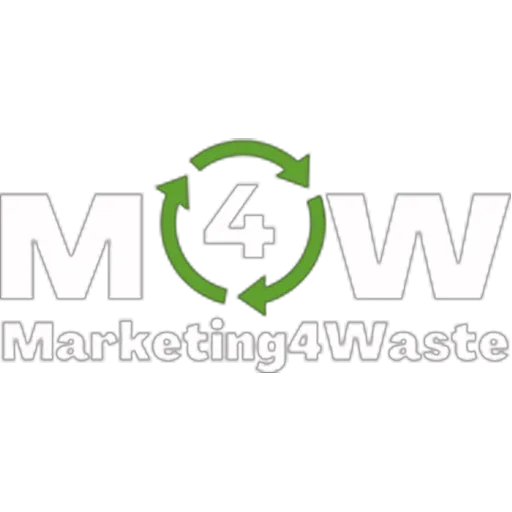Increase the Revenues of Your Waste Company With the Tips Shared in Our Blog Articles

Why Waste-to-Energy is Quietly Sabotaging America’s Economic Independence
Every day across the United States, thousands of tons of potentially valuable materials are torched into thin air under the illusion of progress.
We call it “waste-to-energy.”
A model sold to municipalities and private operators as a win-win: get rid of your trash and generate electricity.
Sounds good, right?
But let me be blunt—this approach is killing your profits, hurting national industries, and directly contradicting U.S. trade strategy.
Yes, you read that right.
If you're in the waste business and think your biggest competition is the hauler next door, you're missing the real game.
Your competition is China’s grip on critical raw materials—and you’re helping them win every time you send mixed waste to the incinerator.
Let me explain.
👉 [Book a 20 Minute Free Consultation Call]
The Real Cost of Burning Trash
Waste-to-energy is sold as a simple trade: turn garbage into power.
But here’s the uncomfortable truth they don’t advertise:
When you burn waste, you don’t just burn banana peels and paper scraps.
You burn copper. Aluminum. Rare earths. Gold. Silver. Palladium. Platinum. Lithium.
You burn money. Strategic materials. National potential.
Here’s what’s really inside the average ton of municipal solid waste (MSW) in the U.S.:
4 to 10 lbs of aluminum
3 to 7 lbs of copper
15 to 25 lbs of electronics (e-waste)
Up to 15% of plastics that could be reprocessed into valuable feedstock
Residual metals and alloys used in appliances, tools, packaging, vehicles, and more
And now let’s talk scale.
Across the U.S., over 80 WTE facilities process more than 29 million tons of waste every year.
That means—every single day—we’re destroying:
200+ tons of aluminum
150+ tons of copper
Hundreds of tons of recyclable polymers
Unmeasurable quantities of rare earth elements from e-waste and appliances
Most of which could be extracted, sold, and reinjected into local manufacturing sectors.
But instead, they're turned into ash, buried, and forgotten.
👉 [Book a 20 Minute Free Consultation Call]
Why This Is a Direct Contradiction to the Tariff Strategy
Let’s connect the dots.
In the past five years, the U.S. has rolled out aggressive tariffs and trade restrictions on materials coming from China, Russia, and other strategic rivals.
Why?
Because we don’t want to be dependent on foreign supply for materials that power our national industries.
And yet, while we fight for geopolitical autonomy with one hand…
we incinerate our own material reserves with the other.
Waste-to-energy doesn’t just fail to support the national economy—it actively undermines it.
The U.S. government is investing billions into:
Semiconductor plants
EV battery factories
Defense supply chain restoration
Renewable energy infrastructure
Construction and transport upgrades
All of which require:
Copper for wiring, transformers, motors
Aluminum for lightweight structures and vehicle parts
Cobalt and lithium for battery cells
Rare earth elements for electronics, defense, and energy tech
Steel and ferrous alloys for industrial manufacturing
Where will these materials come from?
If you’re burning them every day in your trucks, landfills, and furnaces—you’re not just missing out on a business opportunity.
You’re helping to maintain the very dependency these tariffs were designed to break.
👉 [Book a 20 Minute Free Consultation Call]
What You’re Actually Sitting On
If you run a waste management company, here’s the brutal truth:
You’re likely throwing away more money than you’re making—every single week.
Let’s do a quick mental audit of what’s hiding in your current waste stream:
Mixed loads of construction debris with copper pipes and aluminum framing
Small appliances with motors, wiring, and steel parts
Old TVs, laptops, and electronics full of precious metals
Plastic packaging that could be compounded and sold
Car and bike parts containing alloys and high-demand metals
And yet, if your primary outlet is landfill or WTE…
you’re watching all of it disappear into flames or rot.
This isn’t about being more efficient.
It’s about waking up to the true potential of the material you already control.
👉 [Book a 20 Minute Free Consultation Call]
You Don’t Need a Factory. You Need a System.
Here’s the best part: You don’t need to build a plant, buy expensive machinery, or go crazy with CapEx.
What you need is a material recovery strategy that turns your existing operation into a local supplier of critical materials.
That means:
Segregating valuable streams before incineration
Building partnerships with processors, refiners, and re-manufacturers
Pricing waste loads by material value, not weight
Educating your team to recognize high-potential fractions
Repositioning your business as a supplier, not just a collector
I’ve built these models. I’ve helped others flip their operations. And I can show you exactly where the opportunity lies in your business.
👉 [Book a 20 Minute Free Consultation Call]
What’s the Risk of Doing Nothing?
If you ignore this, here’s what’s coming:
Your competitors will start recovering materials and selling them—outperforming you without lifting more weight.
Legislation will increasingly favor material separation, and WTE operators will find themselves overregulated and underpaid.
You’ll lose out on strategic partnerships with industries looking to secure local material suppliers.
Worst of all—you’ll stay stuck in the outdated “waste disposal” mindset, while others enter the high-margin resource trade.
👉 [Book a 20 Minute Free Consultation Call]
Final Thoughts from The Waste Management Alchemist
Waste-to-energy might look like a solution. But in reality, it’s an outdated model in direct conflict with where the U.S. economy is heading.
You’re not in the trash business anymore. You’re in the materials game.
And the sooner you play to win, the faster you’ll grow.
There’s no fluff here. No ideology. Just math, metal, and missed margins.
Let me help you find the gold you’ve been burning every day.
To Your Success
Sam Barrili
The Waste Management Alchemist


© 2025 Marketing4waste - All Rights Reserved,
Marketing4Waste is a brand of MiM MarketingInterimManagers LLC
+1 801 804 5730

